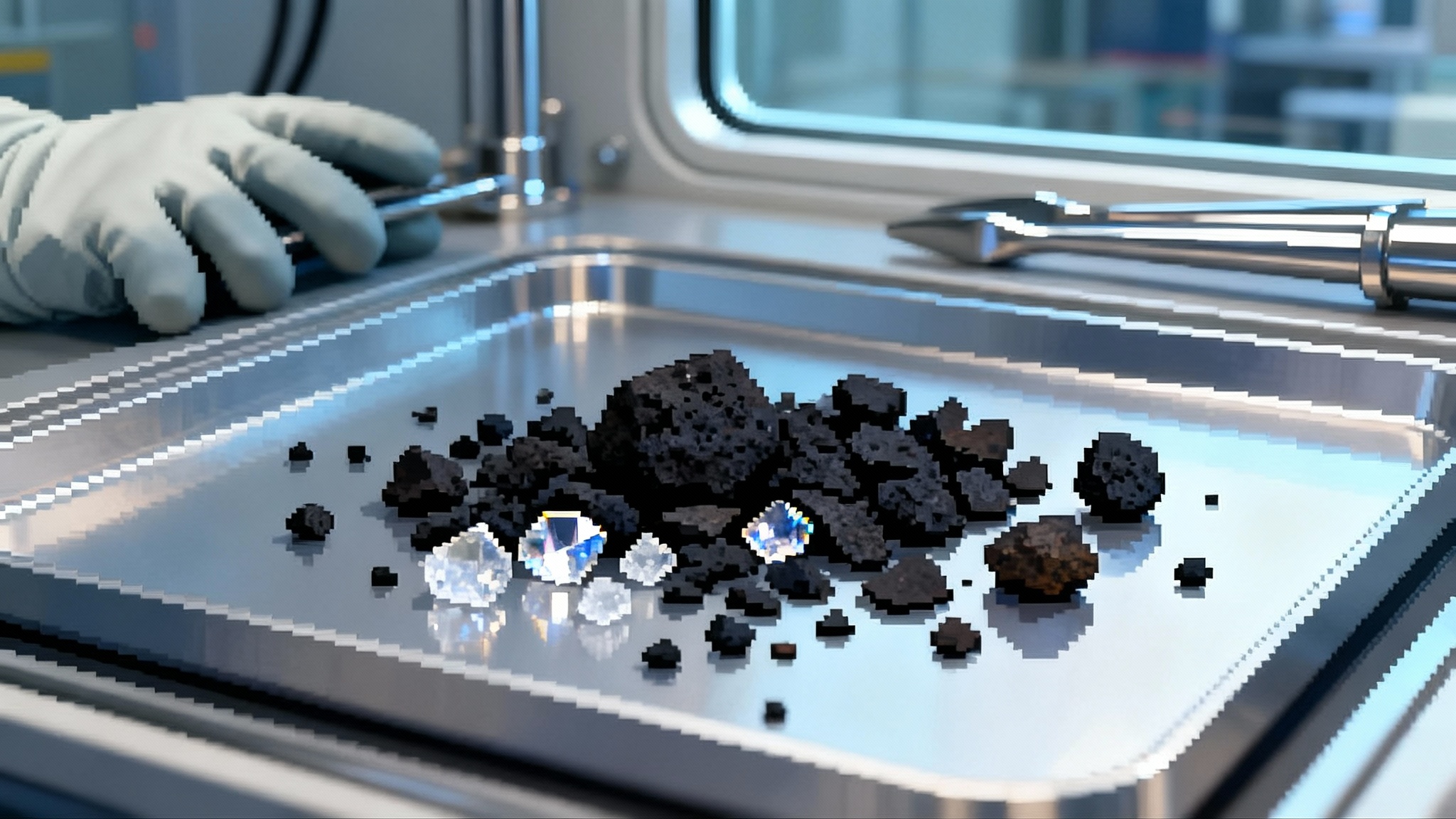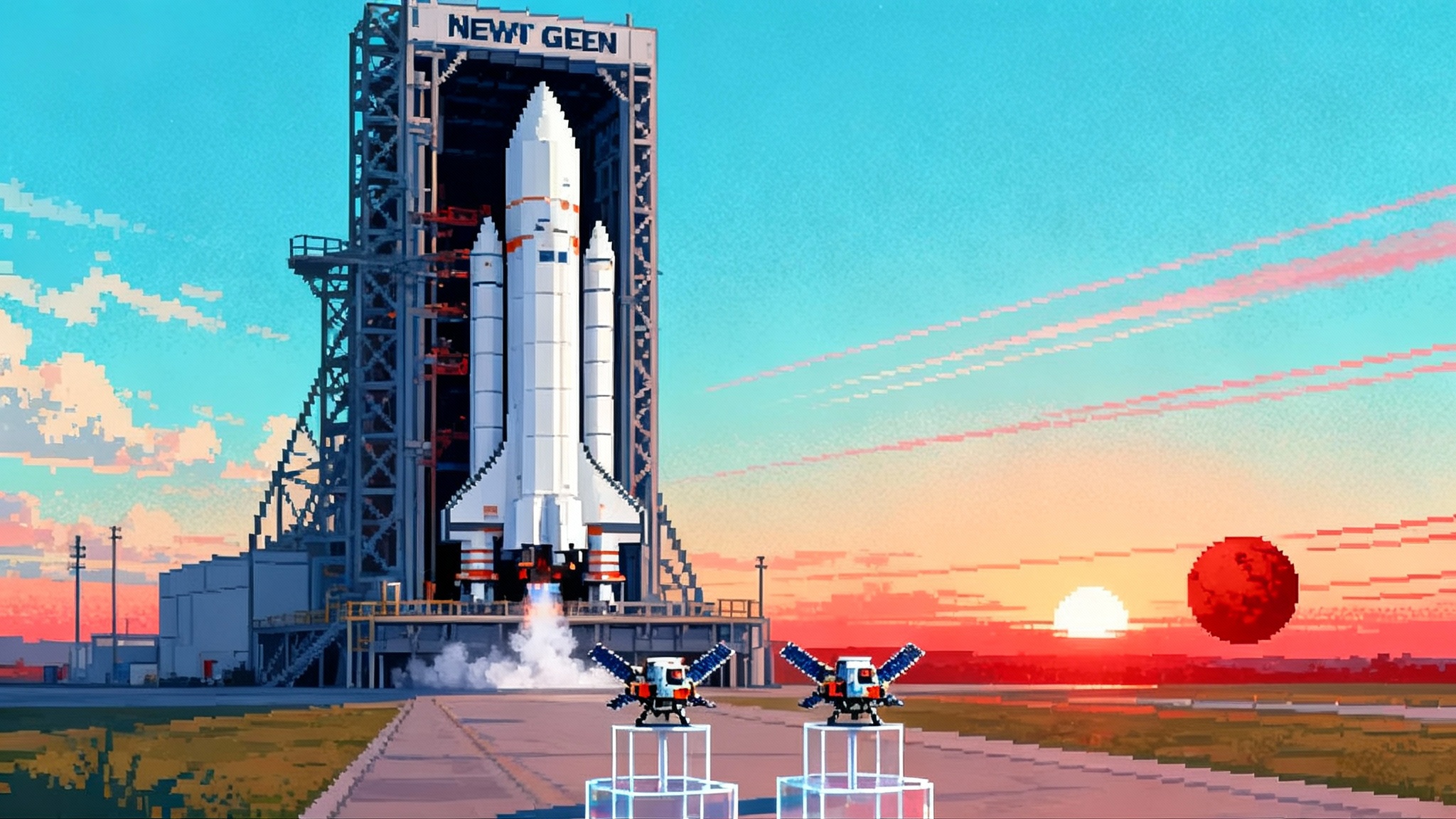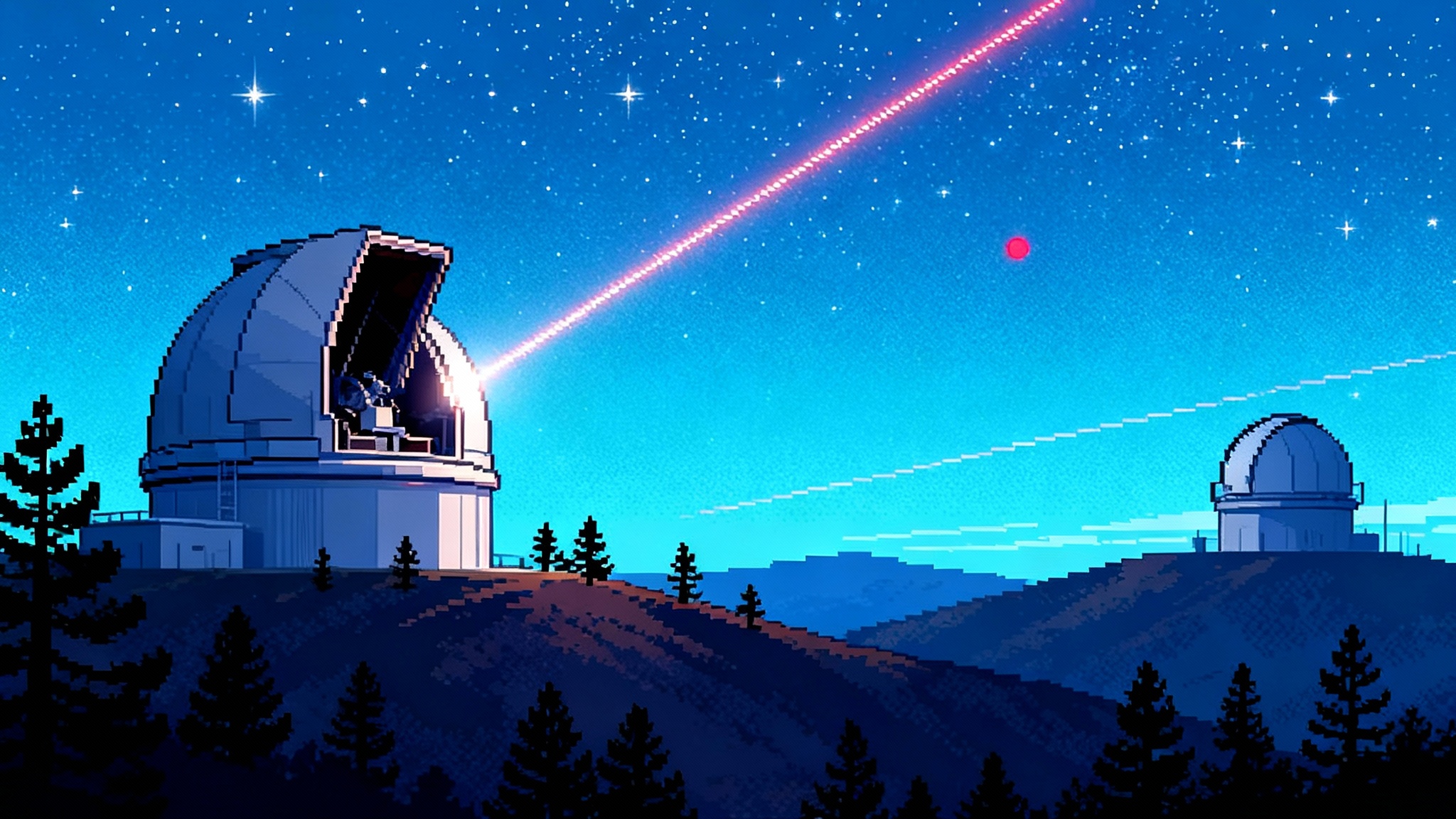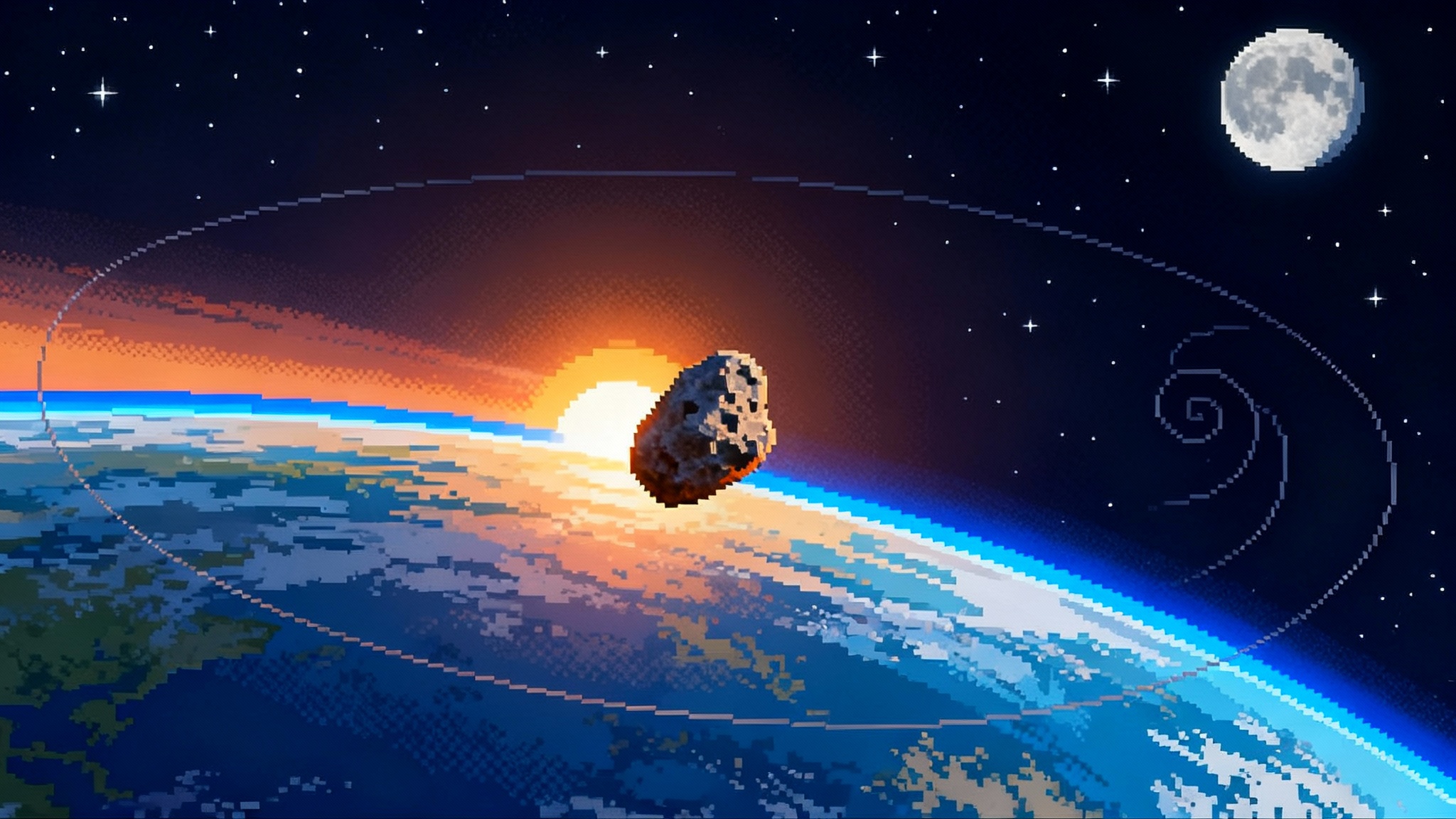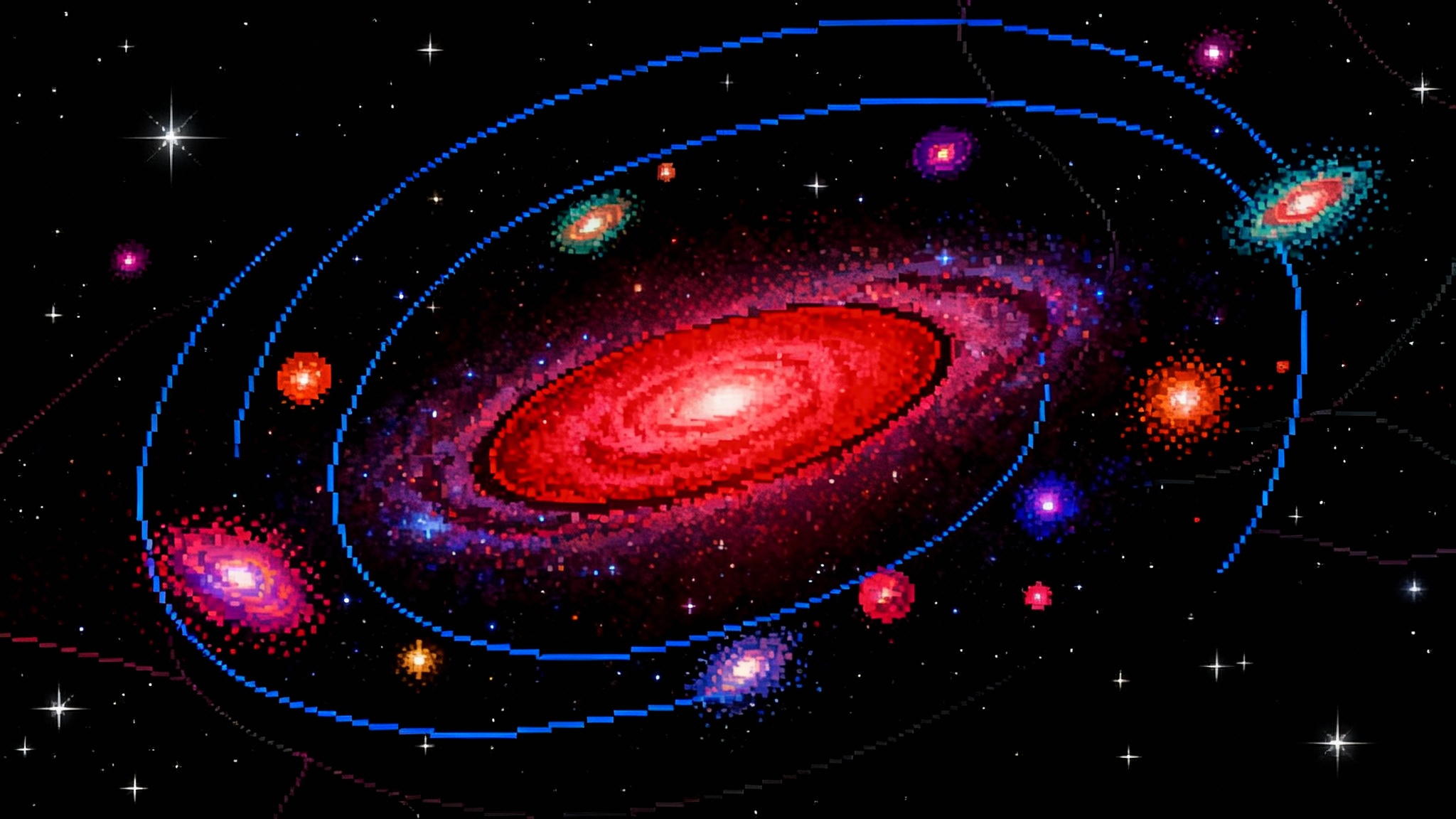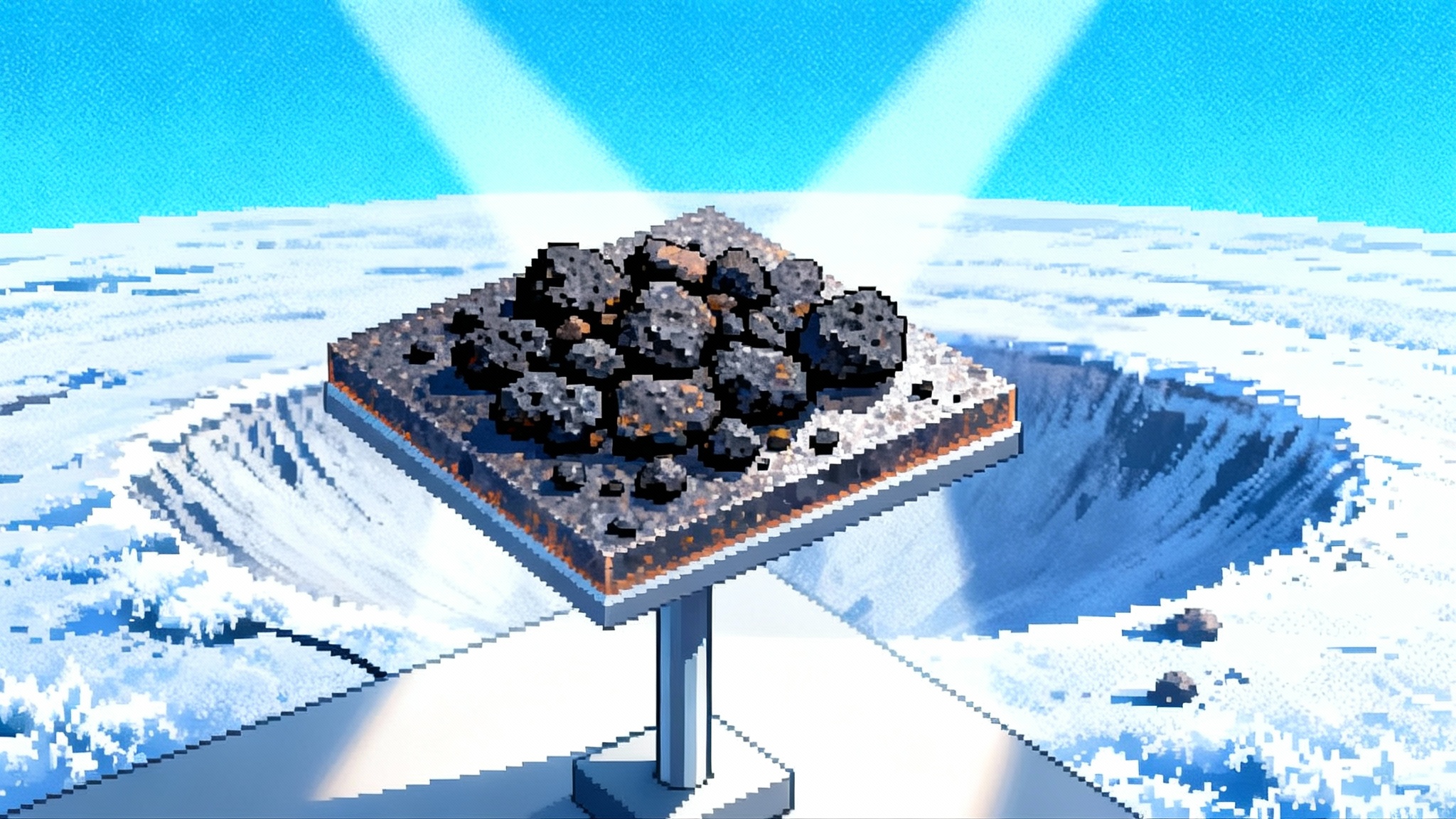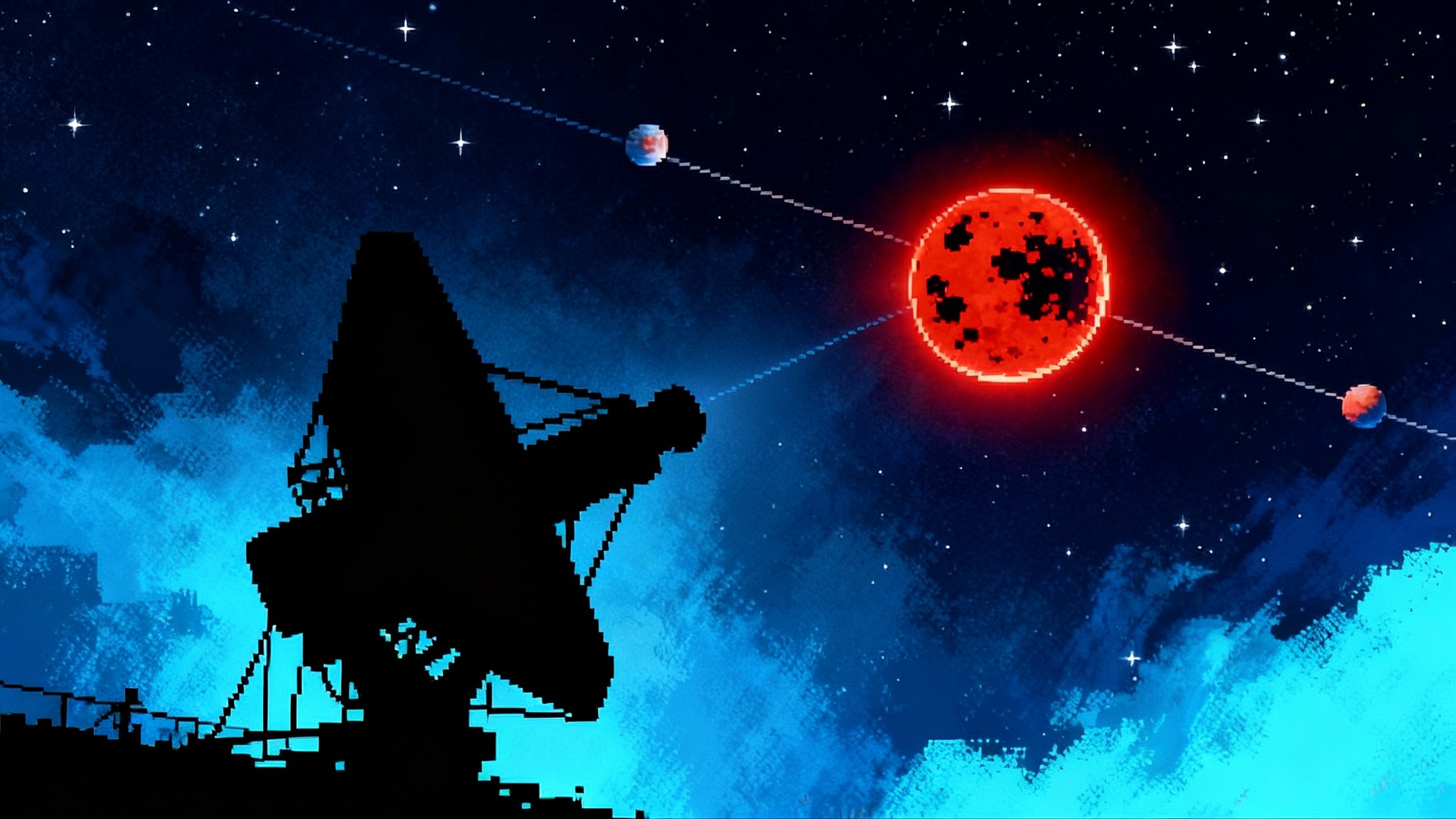Blue Ghost at Mare Crisium marks a CLPS turning point
Firefly’s Blue Ghost stuck the landing at Mare Crisium in March 2025, then delivered heat flow drilling, dust control, lunar GNSS, a next-gen retroreflector, and magnetosphere imaging. Here is how CLPS shifted from demos to decisions that shape Artemis operations.
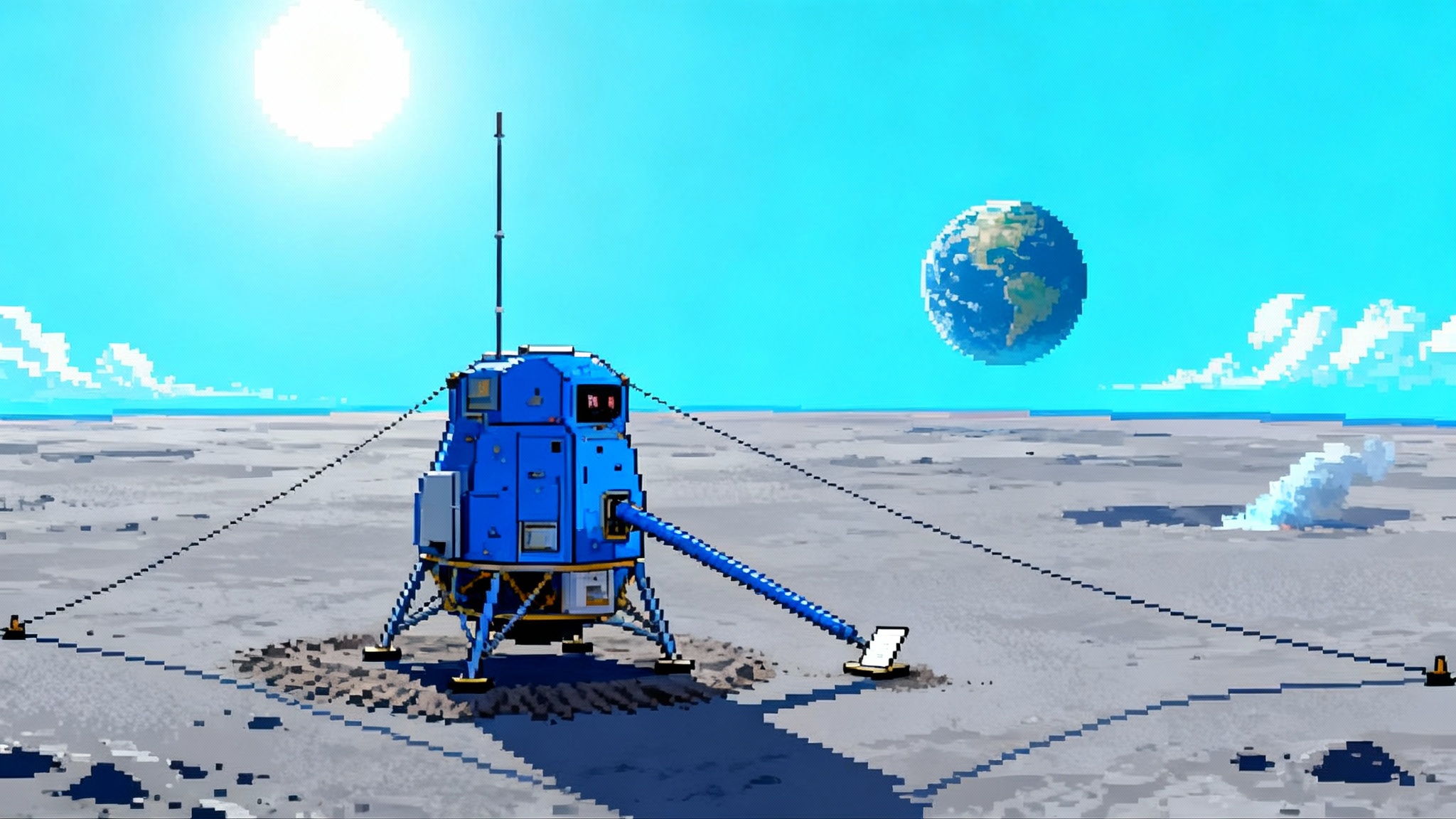
A landing that changed the mood
On March 2, 2025, Firefly Aerospace’s Blue Ghost Mission 1 eased to a stop near Mons Latreille in Mare Crisium at 3:34 a.m. EST, then started sending back images and data. NASA confirms Blue Ghost touchdown, and for the first time in this young program, a commercial lander not only arrived intact but ran the table on a broad, practical science agenda across a full lunar day. The tone across the community shifted. CLPS stopped feeling like a string of auditions and started looking like a service.
The landing site matters. Mare Crisium is a flat, basaltic plain that lets instruments do their work without fighting constant slopes or boulder fields. It is not a polar site, but it is a proving ground for the kinds of measurements and techniques that will make polar operations safer. Blue Ghost’s 14 days on the surface were not a stunt. They were a checklist of capabilities Artemis will rely on.
From demos to decisions
Before Blue Ghost, CLPS flights mostly proved that private landers could reach the Moon and talk to Earth. Blue Ghost did more. It delivered a set of investigations that answer operational questions: How hot is the ground at depth. How do we tame dust on critical surfaces. Can GPS and Galileo really guide you on the Moon. Can we tighten the Moon’s geodetic frame with a new retroreflector. Can a lander on the Moon image Earth’s magnetosphere in motion. What can we learn about the lunar interior from electrical and magnetic fields.
The difference is not only scientific. It is architectural. If CLPS is going to be the truck stop for Artemis, then the instruments have to move the conversation from curiosity to certification. This mission did that.
Heat beneath the boots: drilling for heat flow
Blue Ghost carried LISTER, a pneumatic drill and thermal probe designed to penetrate on the order of meters into regolith and measure temperature and conductivity with depth. The goal is heat flow, which sounds academic until you think about habitats anchored in that ground, power cables buried for thermal stability, and the long-term behavior of ice and volatiles.
Why it matters for Artemis
- Engineering margins: Knowing the true thermal gradient helps size radiators, heater power, and insulation for surface infrastructure and rovers.
- Site selection: Mare heat flow is a mantle proxy with low local radioactivity. Comparing mare measurements with future polar and farside heat flow helps de-risk where to build first.
- Subsurface operations: A drill that can make controlled stops to measure conductivity at intervals is exactly the sort of tool you want when the job becomes placing fiber, pipes, or thermal wicks.
Blue Ghost also hosted PlanetVac, a gas-powered sampler. It is a practical way to collect and transfer fines without complex moving parts. For future resource prospecting, that kind of low-mass, low-power sample handling is valuable.
Dust: mitigate, characterize, and design for it
Dust is not a nuisance on the Moon. It is a mission risk. Blue Ghost put three payloads on the problem.
- Electrodynamic Dust Shield: Demonstrated active dust removal from glass and thermal radiator surfaces using electric fields. This is a direct path to keeping radiators and camera windows clear without consumables.
- Regolith Adherence Characterization: Exposed curated materials and coatings to lunar conditions to measure how much dust sticks and how that changes with time. It turns the Apollo anecdotes into data engineers can plug into models.
- SCALPSS stereo cameras: Captured the descent plume and the first hours on the surface, providing photogrammetry to model erosion and ejecta. That feeds into landing pad design, standoff distances, and the rules of the road for landing near assets.
Taken together, these are the beginnings of a dust control playbook. Future Artemis cargo flights will land near each other and near crewed assets. You need to know what happens when a big engine fires on unconsolidated soil. You also need surfaces that shrug off dust after it happens. For polar construction planning, see the related VIPER rover delivery plan.
Navigation and reference: GNSS at the Moon and a new mirror
Two payloads on Blue Ghost may quietly influence Artemis operations more than any other. One tells you where you are. The other pins the map to reality.
- LuGRE, the Lunar GNSS Receiver Experiment, acquired and tracked GPS and Galileo signals in transit, in lunar orbit, and on the surface. On March 3, it achieved the first lunar GNSS surface fix. That is not a replacement for DSN and optical navigation, but it is a powerful supplement for approach, terminal descent, rover ops, and asset timing. It also opens the door to autonomous local PNT services backed by Earth constellations.
- NGLR, the Next Generation Lunar Retroreflector, is a compact, high-precision corner cube that is already being ranged by multiple Earth observatories. Every clean laser return tightens the lunar reference frame, supports tests of fundamental physics, and, crucially for operations, improves selenodesy and the absolute tie between orbital imagery and surface coordinates. Better maps, better landings, better traverse planning.
For Artemis planning, the combination is potent. GNSS-derived timing and positioning down to the surface plus improved absolute geodesy means safer approaches and more confident navigation for rovers, crew, and construction robotics.
Imaging Earth’s magnetic heartbeat from the Moon
LEXI, the Lunar Environment heliospheric X-ray Imager, lit up in orbit and on the surface to image the edges of Earth’s magnetosphere where solar wind meets our field. From the Moon, you get a global view that a low Earth orbit platform cannot. Seeing the magnetopause shift and contort in soft X-rays is not just heliophysics candy. It supports space weather nowcasting that informs when to power down sensitive systems, schedule EVAs, or expect comms disruptions. For context on heliophysics-driven forecasting, compare with PUNCH 3D solar wind movies and the roadmap in IMAP at L1 will reshape exploration.
Listening to the interior with fields, not quakes
LMS, the Lunar Magnetotelluric Sounder, deployed electrodes and a mast to measure electric and magnetic fields and infer subsurface conductivity hundreds of kilometers down. Magnetotellurics complements heat flow. Where heat flow tells you about thermal gradients and radioactive elements, conductivity maps hint at composition, temperature, and even the presence of volatile-rich layers.
For Artemis, that matters in two ways. First, science planning. Understanding how the mantle varies under different crustal provinces helps decide where to send heavy geology payloads that cannot ride on every flight. Second, operations. Conductivity influences induced currents and electromagnetic interference. If you plan to build long power runs and operate sensitive instruments, you want to know the EM personality of the ground beneath you.
Computing through radiation events
RadPC, a radiation-tolerant computer demonstrator, operated through transits of the Van Allen belts and on the surface. Fault detection and recovery in situ is central to lunar autonomy. Power cycles at lunar nightfall and sunrise, charged particles during solar activity, and repeated thermal swings are the environment. Resilient onboard computing is the response.
What this means for Artemis site prep, navigation, and operations
Put the pieces together and you get a picture of how CLPS is maturing into a practical arm of Artemis. The lesson is not that one instrument changes everything. It is that the suite adds up to operational knowledge.
Site preparation
- Heat flow and conductivity inform where to anchor and bury lines, what thermal margins to design for, and where to expect benign ground.
- Plume imaging and dust adhesion data support landing pad materials, berm heights, and safe separation distances between landing zones and habitats.
Navigation
- GNSS at the Moon augments DSN and optical navigation for approach, terminal guidance, and rover traverses. It also enables common timing across assets for better coordination.
- A new retroreflector sharpens selenodesy. Better absolute positions reduce the mismatch between orbital maps and surface reality, which saves propellant and time.
Operations
- Dust mitigation techniques protect radiators, optics, and solar arrays. That means more uptime and less mass dedicated to cleaning consumables.
- Radiation-tolerant computing makes autonomy more robust, which is essential when crews are not present or cannot be in the loop.
- Magnetosphere imaging helps set EVA schedules and protect sensitive experiments during stormy space weather.
In short, Blue Ghost delivered not only data, but procedures. You can start to write Artemis playbooks from this mission.
A clear-eyed view: success, partials, and losses
If Blue Ghost is the banner for what right looks like, early 2025 also reminded us what risk looks like.
On March 6, 2025, Intuitive Machines’ IM-2 mission touched down near the lunar south pole. The lander, Athena, did not come to rest upright. It appears to have slid or tipped within a crater a few hundred meters from the target. Controllers extracted what data and payload activity they could, then the combination of shadows, panel angles, and cold stopped the mission within days.
It was not a loss in the strictest sense. The landing itself matters. It was the southernmost lunar landing and it returned useful information about polar terrain, lighting, and the unforgiving geometry of power at high latitudes. But it was not the surface campaign planners hoped for. IM-2 is a sober reminder that polar operations are different. Slopes, shadows, and crater microclimates amplify every small error.
A week earlier, on February 26, 2025, NASA’s Lunar Trailblazer launched to map lunar water from orbit. Contact was lost the next day. After months of recovery attempts, the mission was declared over on July 31. Small spacecraft push capability into new corners of the budget and schedule box, and sometimes the box pushes back. The right lesson is not to retreat, but to design redundancy and to fly often enough that a loss sets you back weeks, not years.
Taken together, these stories show what working commercial lunar exploration looks like in 2025. There will be clean wins. There will be partials that still teach. There will be losses that sting but focus the next build. Fixed-price contracting shifts risk to providers, which concentrates minds and rewards execution. It also means the ecosystem needs cadence to learn quickly.
What mature CLPS looks like from here
Blue Ghost hints at the future shape of commercial lunar work.
- Suites over singles: Bundled payloads that address a theme, like site readiness or navigation, provide multiplicative value. Expect more flights that look like portable field labs.
- Standard interfaces: Planetary drills, dust devices, and reference sensors become catalog items. Standardized mounting, power, and data make it easier to mix and match.
- Cross-calibration: GNSS fixes tied to laser ranging targets, tied to orbital maps, tied to ground truth from cameras and drills. The trick is not a better single sensor, but tighter integration across them.
- Operations rehearsals: Imaging the magnetosphere from the Moon sounds abstract until it guides EVA timing. Expect more payloads that look like they belong on a mission control console, not only in a journal paper.
None of this diminishes the science. In fact, it strengthens it. The best geophysics comes from steady, well-characterized operations. The best resource prospecting comes from instruments that can survive long enough to repeat measurements in different seasons and lighting.
The bottom line
March 2025 will be remembered not only as the week two commercial landers reached the Moon, but as the moment one of them delivered a template. Blue Ghost showed a way to make CLPS flights matter immediately to Artemis planners. Drill the ground you plan to build on. Clean the surfaces you need to survive. Pin your maps to the Moon with a new mirror. Let your lander help watch the space weather that will affect every EVA. And use the sky full of Earth’s navigation satellites to know exactly where you are.
The Moon has always rewarded stepwise progress. The step this spring was a full stride.

